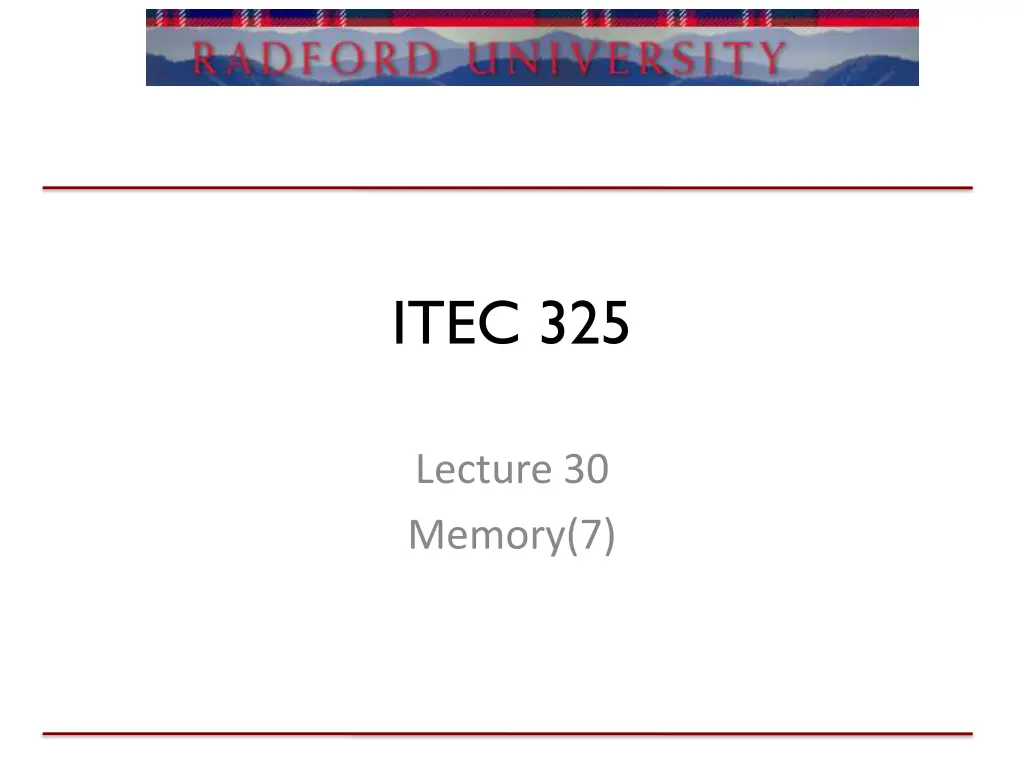
Memory Technology Comparison and Applications
Explore the comparison between Rambus and other memory technologies, such as SDRAM and DDR, including differences in speed, architecture, and usage in devices like game consoles. Learn about the underlying principles of flash memory and cell structures. Delve into the intricacies of memory components, highlighting key features and technological advancements in the field.
Download Presentation

Please find below an Image/Link to download the presentation.
The content on the website is provided AS IS for your information and personal use only. It may not be sold, licensed, or shared on other websites without obtaining consent from the author. If you encounter any issues during the download, it is possible that the publisher has removed the file from their server.
You are allowed to download the files provided on this website for personal or commercial use, subject to the condition that they are used lawfully. All files are the property of their respective owners.
The content on the website is provided AS IS for your information and personal use only. It may not be sold, licensed, or shared on other websites without obtaining consent from the author.
E N D
Presentation Transcript
ITEC 325 Lecture 30 Memory(7)
Review P2 assigned Exam 2 Friday Paging Segmentation Memory (7)
Flash Memory (a) External view of flash memory module and (b) flash module internals. (Source: adapted from HowStuffWorks.com.) Memory (7)
Cell Structure Current flows from source to drain when a sufficient negative charge is placed on the dielectric material, preventing current flow through the word line. This is the logical 0 state. When the dielectric material is not charged, current flows between the bit and word lines, which is the logical 1 state. Memory (7)
Rambus Anyone remember this technology? Quote: At the 400 MHz databus, the interface to a RDRAM operates with an extremely fine timing granularity of 1.25ns, resulting in a component latency of 38.75ns. The PC100 SDRAM interface runs with a coarse timing granularity of 10ns, or about eight (8) times that of RDRAM. Its interface timing matches the memory core timing very well, therefore its component latency ends at 40ns. The PC133 SDRAM interface, with its coarse timing granularity of 7.5ns, incurs a mismatch with the timing of the memory core. This mismatch significantly increases the component latency to 45ns. http://www.dewassoc.com/performance/memory/rdram_v_sdram.htm Memory (7)
Speed Rambus was technically better Rambus transferred up to 6400 MB/s DDR transfers up to 3200 MB/S DDR2 transfers up to 8533 MB/S DD3 transfers up to 17,066 MB/s Corporate decisions Licensing cost Manufacturing costs Memory (7)
How Wide versus small Send 32 to 64 bits over the bus at a time Send 8 bits across several times Rambus = 1.5 inches of Mobo space SDRAM = 6 inches of Mobo space Required change in manufacturing process Problem Scaling to a 64 bit architecture would be a nightmare Memory (7)
Rambus Memory Comparison of DRAM and RDRAM configurations. Memory (7)
Usage Rambus technology on the Nintendo 64 motherboard (left) enables cost savings over the conventional Sega Saturn motherboard design (right). Nintendo 64 game console: Memory (7)
Summary Flash memory RDRAM Memory (7)
